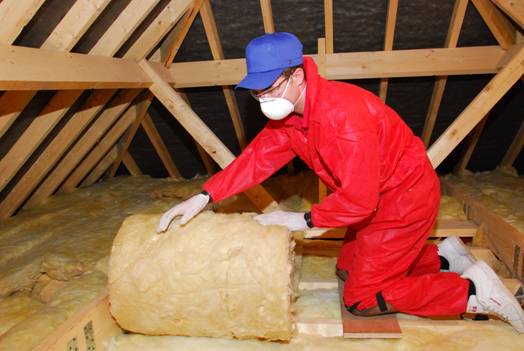Can Proper Insulation Save the Countryside from “Too Much Energy Efficiency”

In recent months, we have frequently heard terms such as energy efficiency, carbon reduction, and fuel poverty. This is largely due to the upcoming election, where environmental and energy efficiency goals have become a top priority for political parties. However, while targets such as zero carbon homes are often discussed, there is little detail on how these goals will be achieved or what the potential consequences might be.
Thanks to some groups and organisations, we have learned that carbon reduction targets could have a significant impact on the UK countryside. The pursuit of energy efficiency might necessitate the construction of numerous wind turbines and solar panels, occupying vast areas of the countryside. The Campaign to Protect Rural England has published a report called Warm and Green, which examines the effects of energy efficiency and carbon targets on rural areas and suggests ways to mitigate potential negative impacts.

The report’s key findings include:
- Many people in the countryside are willing to invest in energy efficiency by retrofitting and upgrading their homes, but they have limited funds. Despite 18% of the population living in rural areas, only 1% of available funding is directed there.
- The best way to achieve the set targets is by combining home upgrades, reductions in the commercial sector, and improvements in transportation with the use of renewable energy sources. However, this could result in up to 8,000 hectares of land being covered in solar panels and approximately 3,500 new wind turbines, which would significantly impact the countryside and its inhabitants.
The report emphasises the importance of cutting carbon emissions by upgrading existing countryside homes, which are often under-heated. This can be achieved by applying established construction techniques and using natural insulation materials, particularly thinner solid wall insulation solutions.
Interviews conducted for the report highlighted that the most prevalent thermal upgrades are insulation (cavity and solid wall, loft, and under-floor insulation), secondary glazing, boiler replacement, solar panels, and heat pumps. Motivations for energy upgrades varied, ranging from tackling fuel poverty and promoting renewable energy use to protecting the environment.
So, What Are the Conclusions?
Can proper insulation protect the countryside from excessive energy efficiency? The report confirms what is already known and applicable in both urban and rural areas. To combat fuel poverty, limit energy consumption, and reduce carbon emissions, we should begin with our homes and adopt available energy efficiency measures. The government should support the funding of these measures, irrespective of the area.

These measures could (and should) include:
- Draught-proofing and proper ventilation can significantly improve the airtightness of any home. Vulnerable areas include doors, windows, loft hatches, and gaps between floorboards. Simple solutions like weather stripping can be highly effective. Additionally, installing proper damp courses and vapour barriers, especially in older homes, can help prevent moisture, which contributes to heat loss.
- Using renewable energy sources, wherever possible, such as solar electricity panels (a worthwhile investment considering the Feed-in Tariffs), solar thermal panels for hot water, or biomass energy.
- Proper insulation in countryside homes is crucial. Loft insulation, in particular, is an effective and cost-efficient way to reduce energy consumption. A 2012 study found that 14% of homes in five villages needed loft insulation, and 32% could benefit from it. Interviewees also expressed satisfaction with internal and external solid and cavity wall insulation.
- Finally, double or secondary glazing is a top priority. Double-glazed windows are more than twice as effective as single-glazed alternatives in retaining heat. For listed buildings, secondary glazing can be just as effective.


































































































































